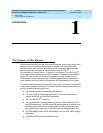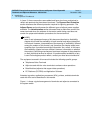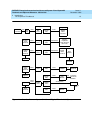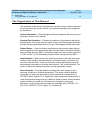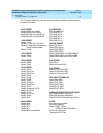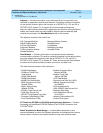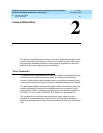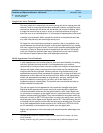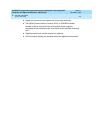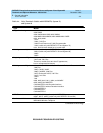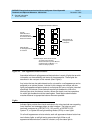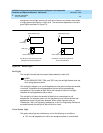
DEFINITYEnterpriseCommunicationsServerandSystem75andSystem85
Terminals and Adjuncts Reference
555-015-201
Issue 11
December 1999
General Information
2-2Voice Terminals
2
Single-Line Voice Terminals
The term “single-line” means that only one incoming call can be ringing at an idle
terminal. Once an incoming call has been answered, however, a single-line voice
terminal can handle both the active call and another call on hold or waiting. When
a single-line terminal user is busy on a call, an incoming call does not ring but
alerts the user via a “call waiting tone” (in the handset or speakerphone) that a call
is waiting to be answered. While a single-line terminal is occupied with two calls,
any other calls placed to the terminal get a busy tone.
All single-line voice terminals are analog in operation; that is, transmission of all
signals between the terminal and its port, at the system digital switch, is in analog
form over a tip and ring pair of wires. The port circuit provides analog/digital signal
conversion. Power for these terminals is supplied from the switch on the single
voice pair. Single-line terminals have many applications but are more limited in
their access to system features than multi-appearance terminals.
Multi-Appearance Voice Terminals
A multi-appearance voice terminal gives its user much more flexibility in handling
calls than a single-line voice terminal. A multi-appearance voice terminal,
represented by a unique primary extension number, has multiple call appearances
(buttons with lights) where incoming calls to the number can be answered and
outgoing calls can be originated. Incoming calls can ring simultaneously at all
appearances except for those translated as originate-only. As long as at least one
appearance is idle, callers will not receive busy tone. When all call appearances,
except call appearances translated as originate-only, are busy, callers will hear
busy tone unless the incoming call is a priority call or the Restrict Last
Appearance feature is deactivated. The terminal user must decide the order to
answer multiple incoming calls.
The two sub-types of multi-appearance voice terminals are digital and hybrid.
Digital terminals generate and receive voice and control signals in digital form.
Connection between terminals and the system switch is over 2-pair digital links;
no conversion is necessary at the digital line port. Hybrid terminals, as the name
implies, combine analog and digital. They are connected to the system switch by
three pairs of links; on MET
*
-like hybrid sets, one pair is for analog voice, and the
other two pairs are for digital control signals, and on ATL
†
-like hybrid sets, one pair
is for digital control signals, and the other two pairs are for analog voice. DC power
for all multi-appearance terminals (except for the 7404D and 7407D01B, which
are AC powered) is conducted from the switch over the digital pairs.
Digital multi-appearance voice terminals have several important advantages over
hybrids:
* The Multi-Button Electronic Telephone (MET) sets are described in Chapter 19, “Other
Voice Terminals.”
† Analog Terminal Loop (ATL) protocol is used predominantly in MERLIN telephone sets.




